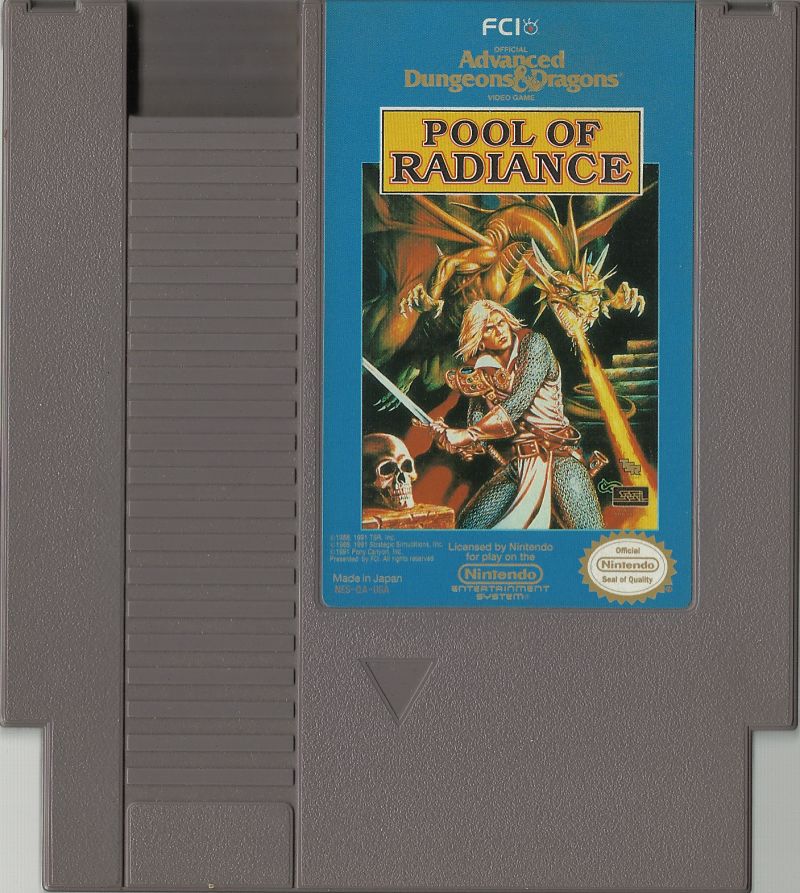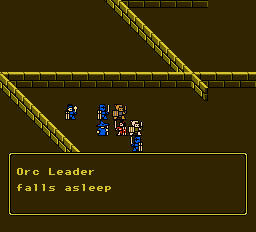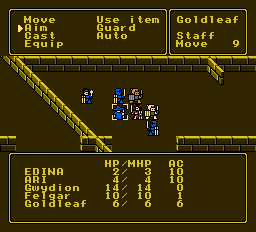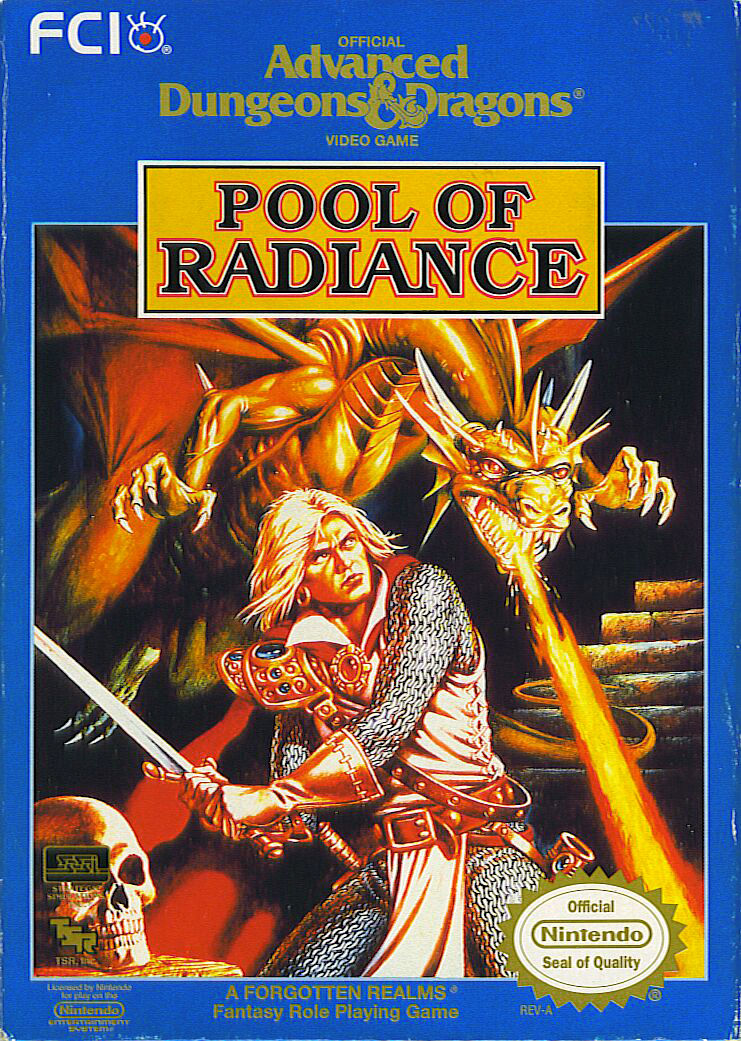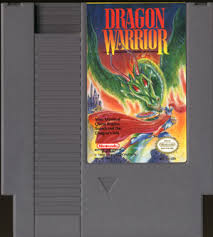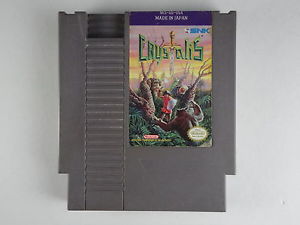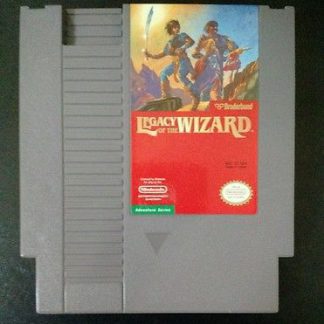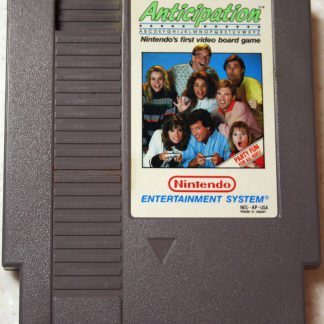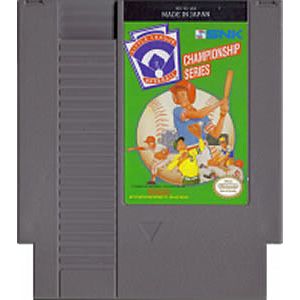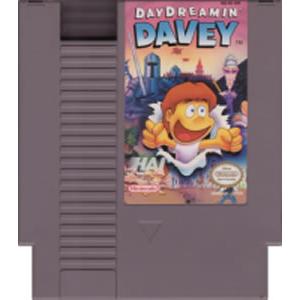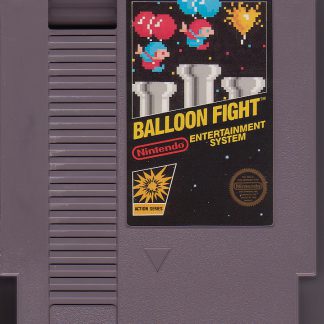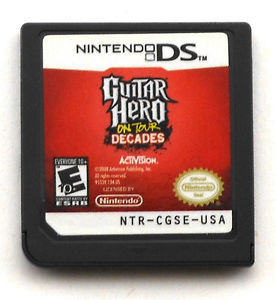Description
Pool of Radiance NES Game Cartridge
Pool of Radiance was released for the NES in 1992. Strategic Simulations published and developed the game. The game was adapted from Advanced Dungeon and Dragons from TSR, a fantasy RPG for computers. It was episode one of four in the D&D computer games. Other games included the series of Gold Box used Pool of Radiance’s game engine, as did the later D&D games like Neverwinter Nights. Original copies of the game came with an introductory booklet that was 28 pages. It described the secrets that were related to the game along with concepts behind them. The game won an Origins Award in 1988 for Best Science Fiction or Fantasy Computer Game. It was praised for its graphics, combat aspects, and the adventure.
The game setting is in the fantasy world of Forgotten Realms, being about a city called Phlan. The city is located on the Moonsea’s northern shore which runs off the Barren River that is between Melvaunt and Zhentil Keep. The party starts inside New Phlan, a civilized section that a council governs. That portion of Phlan hosts businesses that include shopkeepers that will have holy items for sale for every temple’s worshipers, retailers that will provide armor and arms, and the jewelry shop. The party may also contract for a variety of commissions with the city council’s clerk. There are proclamations that are fastened to City Hall’s halls that will offer pieces of information that will help the party. Those clues that are coded are deciphered using an Adventurer’s Journal that the game includes.
Phlan will have three temples with each one dedicated to a different god. Every temple has the ability of healing the wounded, afflicted, or poisoned. They can also fully restore a deceased comrade, but it is high priced. The party is able to visit a hiring hall to hire an NPC adventurer that is experienced on accompanying the party. The encounters with the NPC’s in taverns and shops will offer some valuable information. The gossip inside taverns can help the characters, but some tales will be false and will lead the characters into a lot of danger.
The game mechanics will be based on the AD&D rule set. Like most RPG’s, every character will have a race and a class that will be determined at the game’s beginning. There will be six races offered, including halflings and elves, along with four classes, which are thief, wizard, cleric, and fighter. The characters that are non human will have an option of becoming multi-classed, letting them gain capabilities of multiple classes. However, doing this will cause them to level up slower than normal. While creating a character, the computer will randomly generate stats for every character, though a player can have these attributes altered. The player will also choose the alignment of every character, aka moral philosophy. A character’s alignment will affect how the NPC’s view the player’s actions. Every character’s icon can be customized by changing colors and appearance. The player can alternatively load a party that is pre-generated for use into the play introductory. These characters will be combined to a party that has six or less and will have tow open slots for NPCs. The player can create their own game files for saving which will assure character continuation no matter of the events that have happened during gameplay.
There will be an exploration mode that will use a first person, three dimensional perspective that has a rectangle at the screen’s top left displaying the current view of the party. The other displays on the screen will show information in text about the area and the party. While playing the game, the player can access menus that will let the characters use objects, parlay with the enemies, trade items to other characters, sell, buy, and pool a character’s money, learn newer magical spells, and cast spells. The player can view the characters’ movements from multiple angles, including a view that is aerial. The game will use every sprite in three versions to indicate the differences between long range, medium range, and short range encounters.
While in combat, the screen will change to the top down view with a dimetric projection and the player will decide what actions every character will do in every round. The actions will be taken instantly instead of when all of the commands are issued like the standard in other RPGs. The player will have the option to let a computer choose the character moves for each round. Monsters and characters could make another attack on an enemy that is retreating near them. If one of the character’s HP falls to zero, they will need to be bandaged from another character. If this does not happen, that character dies. The game will have random encounters, with Dragon magazine game reviewers observing that the random encounters seemed to follow the standard patterns of table encounters in paper and pen game manuals for AD&D. Another observation was the monster depictions that confronted a party looked like they had just jumped from pages of a Monster Manual.
Different options for combat will be available to the characters that is based on their class. Examples are fighters can wield ranged or melee weapons, spells can be cast by magic users, and thieves will have the ability of back stabbing an opponent when they strategically position themselves. As the fighters advance in their levels, they will be able to attack more in each round. Fighters will also gain an ability of sweeping enemies that effectively attacks every nearby creature with a low level on one turn. Clerics and magic users will be allowed to remember a certain amount of spells to cast every day. Once the spell is cast, it will need to be remembered again before they can reuse it. That process will require all the characters to be inactive for hours, during which the characters can rest inside the camp. This will also restore any lost HP to the damaged characters. The chore of remembering spells every night will significantly add to game management that is required from the player.
As the characters defeat the enemies, they will receive experience points. When enough experience points are gained, a character will gain a level to become stronger. This training can be purchased in the special areas within city walls. On top of the training, mages will be able to learn newer spells to cast when they transcribe them from the scrolls that are found in unsettled areas. The enemies that are defeated in those areas will contain items like armor and weapons that the characters can take to the city stores and sell.
UPC: 0-22909-10013-1
Platform: NES
Players: 1
Condition: Used
Genre: Role-Playing
Region: NTSC (North America)
Rating: Everyone

